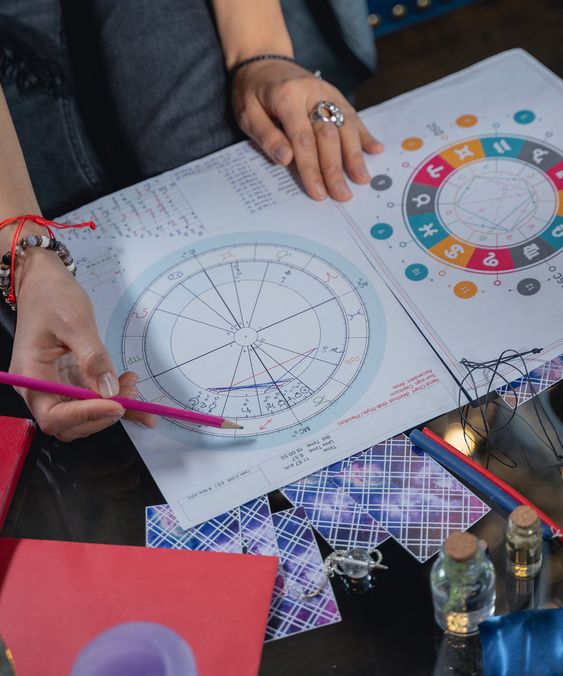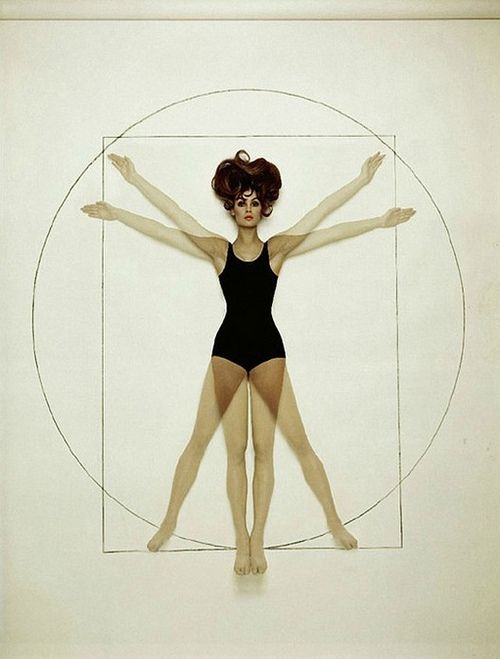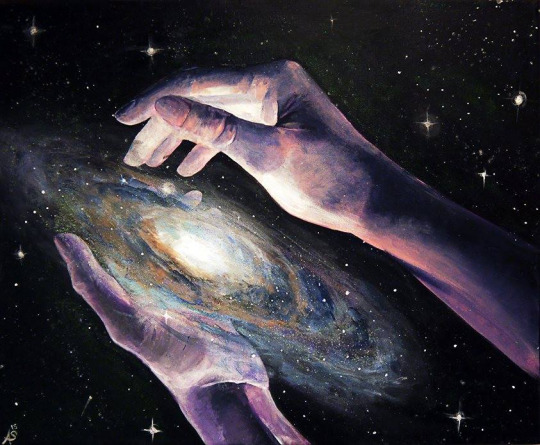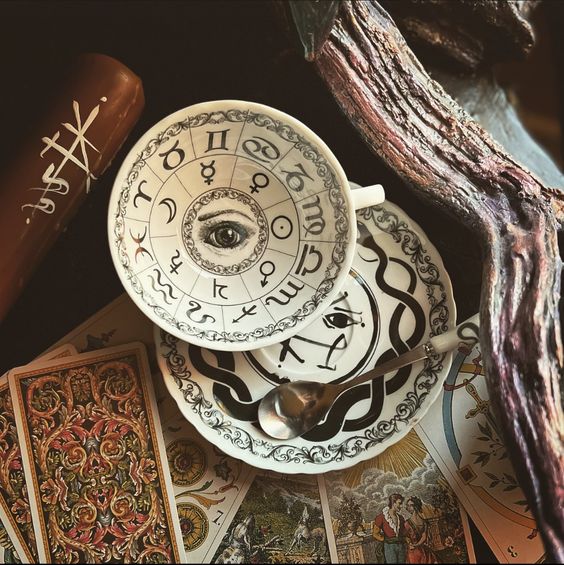
Jungian and Freudian Astrology: Part 1
 Astrologers have long felt a natural affinity with Jungian psychology, finding its concepts to be highly compatible with their astrological work. One of the fundamental ideas that Jung contributed to astrology is the concept of the unconscious as the basis of fate. This notion suggests that there are deeper, hidden forces at play in shaping our lives and destinies. Astrologers often use this understanding to interpret the impact of celestial bodies and their positions on an individual’s life. In her book, “Jungian Symbolism in Astrology,” Alice Hopewell explores the profound connection between astrology and Jungian psychology. In this view, astrology serves as a symbolic language that can be used to describe fundamental human psychological traits. Astrologers can use these symbols as a helpful tool in their interpretations, as they offer a doorway into the mysteries of the human psyche.
Astrologers have long felt a natural affinity with Jungian psychology, finding its concepts to be highly compatible with their astrological work. One of the fundamental ideas that Jung contributed to astrology is the concept of the unconscious as the basis of fate. This notion suggests that there are deeper, hidden forces at play in shaping our lives and destinies. Astrologers often use this understanding to interpret the impact of celestial bodies and their positions on an individual’s life. In her book, “Jungian Symbolism in Astrology,” Alice Hopewell explores the profound connection between astrology and Jungian psychology. In this view, astrology serves as a symbolic language that can be used to describe fundamental human psychological traits. Astrologers can use these symbols as a helpful tool in their interpretations, as they offer a doorway into the mysteries of the human psyche.
Astrology’s appeal stems from the fact that it can shed light on the human mind by means of archetypal symbols. People are drawn to astrology because it provides a framework for self-discovery and understanding the depths of their personalities and life experiences. By exploring the symbolic life, individuals can gain a deeper appreciation for the complexities of their inner world.
A notable aspect of the discussion surrounding astrology and psychology is the contrast between the views of Carl Jung and Sigmund Freud. Jung and Freud, two of the most influential psychologists in history, had a significant impact on each other’s work during their time together. However, they eventually diverged in their perspectives, leading to a famous parting of ways. Astrology can shed light on the areas of psychology that each of these renowned psychologists was naturally drawn to. For instance, Liz Greene, a well-known astrologer, highlights that Jung and Freud studied what they knew best, which is reflected in their astrological charts. Freud’s emphasis on the scientific and analytical aspects of psychology aligns with his Sun-Uranus aspect. In contrast, Jung’s exploration of mysticism, spirituality, and the collective unconscious is symbolized by his exact Sun square Neptune contact in his astrological chart.
Carl Jung’s fascination with alchemy stemmed from his deep interest in understanding the concept of the Self. In his psychological explorations, he delved into the study of alchemical texts and symbolism, seeing alchemy as a profound metaphor for the individuation process—the journey towards wholeness and self-realization. Jung believed that alchemy’s aim to transform base metals into gold was symbolic of the transformation of the human psyche, with the ultimate goal of achieving Selfhood. When applying Jungian concepts to solar issues, particularly in the context of astrology, the Sun takes on a significant role. In Jung’s birth chart, his Sun was in the zodiac sign of Leo, which emphasized the theme of individuality and self-expression. The Sun, representing the ‘true self,’ is seen as the center and totality of the psyche. It symbolizes the core essence of a person—their identity, purpose, and fundamental characteristics.
Neglecting or ignoring this essential part of oneself can lead to a life that feels unfulfilled, unhappy, and purposeless. Jungian psychology encourages individuals to embrace and integrate their true selves to lead a more authentic and meaningful existence. The image of turning to stone signifies the stagnation and suppression of one’s true nature, resulting in a sense of emptiness and lack of fulfillment. Astrologer Sue Tompkins aptly describes the varying degrees of radiance exhibited by different individuals in relation to their Sun aspects. Those who shine like a “150-watt light bulb” exude confidence, self-awareness, and a strong sense of identity. They have embraced their true selves and are living in alignment with their inner essence. On the other hand, individuals who operate at a “40-watt” level might be struggling with self-doubt, identity issues, or a lack of self-expression.
In astrology, the Sun sign and its aspects shed light on an individual’s personality, core values, and how they express themselves in the world. Understanding and embracing one’s Sun sign can help people gain insight into their unique qualities and strengths, leading to a more fulfilling and purpose-driven life. Overall, Jung’s deep exploration of alchemy and his emphasis on the significance of the Self in psychological development align with the understanding of the Sun’s importance in astrology. Embracing one’s true self, as symbolized by the Sun in astrology, is a central theme in Jungian psychology and serves as a pathway to personal growth, fulfillment, and living an authentic life.
In astrology, the Ascendant, also known as the rising sign, holds significant psychological associations, representing the persona or the mask we present to the outer world. The Ascendant is one of the three most important components in a birth chart, along with the Sun sign and the Moon sign. While the Sun sign represents the core essence and inner self, and the Moon sign signifies the emotional and instinctual aspects, the Ascendant serves as the interface between the inner self and the external environment.
The Ascendant is determined by the zodiac sign that was rising on the eastern horizon at the time of an individual’s birth. It changes approximately every two hours, making it highly specific to the time and location of birth. As the starting point of the natal chart, the Ascendant sets the stage for the entire astrological profile and plays a crucial role in shaping one’s personality and outward demeanor.
The persona or mask associated with the Ascendant represents the social face an individual puts forward to interact with the world. It is the impression they make on others, the first thing people notice about them, and how they are perceived in their public life. The Ascendant reflects the way individuals choose to present themselves, the image they want to project, and how they adapt to different situations and social settings.
This persona is not necessarily inauthentic, but rather a self-selected expression of certain qualities that the individual deems appropriate or advantageous in various circumstances. It may align with their true self or be a partial representation of their character. Sometimes, people with a strong or prominent Ascendant may identify with their persona to such an extent that they may feel disconnected from their core identity, leading to questions of authenticity and self-discovery.
“We all don a psychological mask every time we enter into a public situation. The Ascendant in the chart is what represents this mask and we all have outer surfaces, and when we get to know others we enter into their interior selves. The inside of a person is a unique piece of their world that is theirs and only belongs to them, and it is when we are not wearing our psychological makeup we reveal our hidden self.” The Ascendant Two Versions of the Self
The concept of the four elements in astrology has deep roots in both traditional astrology and psychological interpretations, including the influence of Carl Jung’s work on personality types. These elements—Fire, Earth, Air, and Water—are fundamental building blocks used to categorize and understand the zodiac signs, dividing them into triplicities. Jung, the Swiss psychologist and founder of analytical psychology, associated the four elements with four psychological functions: Intuition (Fire), Sensation (Earth), Thinking (Air), and Feeling (Water). He believed that these functions played essential roles in shaping an individual’s personality and how they perceive and interact with the world.
In astrology, the twelve zodiac signs are grouped into the four elements, with each element representing a distinct way of manifesting energy and approaching life.
1. Fire: The Fire signs (Aries, Leo, Sagittarius) are known for their boundless energy and originality. Often inspired and motivated by a need for self-expression, these people are noted for their energy and confidence.
2. Earth: The Earth signs (Taurus, Virgo, and Capricorn) are down-to-earth, reliable, and concerned with the here and now. As a group, they tend to value responsibility, stability, and progress in the material world.
3. Air: The Air signs (Gemini, Libra, Aquarius) are intellectual, communicative, and the relational qualities embodied by the Air signs are widely recognized. Distinguished by their keen intellect, enthusiasm for ideas, they possess the capacity to look at problems from various angles.
4. Water: The Water signs (Cancer, Scorpio, Pisces) are highly sensitive, perceptive, and empathetic, and they stand for an openness with one’s feelings and an ability to empathize with others.
The four elements are not only essential in astrological interpretations but are also associated with broader philosophical and spiritual concepts. In the Kabbalah, a mystical Jewish tradition, the universe is divided into four ideal worlds, or planes of existence, corresponding to the four elements. This connection highlights the profound symbolism and archetypal significance of the elements in various esoteric systems.
Psychological astrology emphasizes the idea that these four elements, as “four functions,” govern the human psyche. Each individual possesses a unique blend of these functions, shaping their personality and influencing their behavior, thoughts, and emotions. The balance and interplay of the elements in an individual’s birth chart provide insights into their psychological makeup and can offer guidance on personal growth and self-awareness.
The elements also play a role in understanding the concept of wholeness within an individual. According to some interpretations, we all have two “selves”: one that seeks emotional connections and stability (Water and Earth) and another that desires independence and self-expression (Air and Fire). Balancing these aspects is essential for achieving a sense of harmony and completeness in one’s life. Dane Rudhyar’s idea of the “fourfold path” refers to the journey of self-discovery and fulfillment along the pathways of sensation, feeling, thought, and intuition. These paths are closely aligned with the four elements and signify different dimensions of personal growth and self-actualization.
In astrology, aspects represent the relationships between planets in a birth chart and play a crucial role in shaping an individual’s psychological makeup. These planetary relationships are symbolic of inner dynamics, conflicts, and drives within the psyche. Each aspect signifies a unique interaction between the energies of the planets involved, influencing how an individual experiences and expresses those energies. The concept of sub-personalities is closely related to the idea of aspects. Sub-personalities refer to the various facets of an individual’s personality that can emerge under different circumstances or in response to various life situations. Each sub-personality represents a distinct aspect of the person’s character, and the interplay of these sub-personalities can give rise to different behavioral patterns and emotional responses. Jung’s introduction of the complex into psychological thought emphasized the existence of unconscious patterns of emotions, memories, and experiences that influence our behavior and perceptions. These complexes can be triggered by certain situations or events, often leading to inner conflicts and emotional turbulence.
The Anima and Animus, as described by Jung, represent the feminine and masculine aspects within each individual, respectively. These archetypal figures play a significant role in shaping our attitudes towards gender and influence our relationships with others. We may project these inner figures onto our partners or other significant individuals in our lives, affecting how we relate to them. The feminine planets (Moon, Venus, Neptune, and Pluto) are associated with emotions, intuition, creativity, and transformation. The masculine planets (Sun, Mars, Jupiter, and Uranus) are linked to assertiveness, ambition, expansion, and innovation. Mercury, considered an asexual figure, governs communication, intellect, and the way we process information.
Mercury’s (asexual planet) relationship to synchronicity adds another layer of depth to its significance in astrology. Synchronicity refers to meaningful coincidences or events that seem to be connected even though there is no apparent causal relationship between them. When Mercury is active in an individual’s chart, synchronistic experiences may become more prevalent, especially in areas related to reading, writing, communication, and learning. Mercury’s role as the connecting function in the horoscope highlights its ability to bridge gaps between different aspects of an individual’s life and personality. It acts as a link between the conscious and unconscious mind, facilitating the integration of various psychological elements and helping individuals gain a more holistic understanding of themselves. Furthermore, the Mercurial area of reading and writing can be particularly potent for synchronistic experiences as engaging in these activities often opens the mind to new ideas and information, making the individual more receptive to meaningful connections.
In psychological astrology, Saturn is often seen as a complex and multifaceted archetype that transcends traditional gender associations. Instead of being classified as purely feminine or masculine, Saturn represents qualities and themes that go beyond gender distinctions. Liz Greene, a prominent astrologer, has explored the symbolic significance of Saturn extensively in her book “Relating: An Astrological Guide to Living with Others on a Small Planet.”
Saturn is commonly associated with the shadow aspect of the personality. The shadow, a concept first introduced by Carl Jung, refers to the unconscious and often repressed aspects of the self that we are not fully aware of or are uncomfortable acknowledging. Saturn’s influence can manifest as limitations, fears, insecurities, and unresolved psychological issues that we carry deep within ourselves. Both Liz Greene and Alice Howell emphasize Saturn’s association with the “old devil,” alluding to its role in confronting us with our inner challenges and limitations. These challenges can manifest in various life circumstances and relationships, urging us to confront and integrate these unconscious aspects for personal growth and self-awareness.
Alice Howell’s idea that Saturn, once unmasked, reflects the spirit of the Sun, adds another layer of depth to Saturn’s symbolism. The Sun in astrology represents the ego, the conscious identity, and the core essence of an individual. By working with and understanding the lessons and limitations represented by Saturn, one can attain a greater sense of self-awareness and authenticity, aligning more closely with their true nature, as symbolized by the Sun.
The application of Freudian psychology to Saturn and the Sun provides an interesting perspective. In Freudian terms, the super-ego represents the internalized moral and societal rules that govern our behavior and conscience. Saturn, with its associations with limitations and responsibilities, can be seen as an internal regulator, urging us to abide by these societal norms and expectations. Furthermore, Saturn’s influence in the birth chart acts as a container of the personality. It sets boundaries, defines structures, and provides a sense of order and stability. Saturn’s placement in the chart and its aspects to other planets indicate how an individual deals with responsibilities, duty, and self-discipline.
The Saturnian element in the horoscope can be seen as a significant teacher, challenging individuals to confront their fears, insecurities, and unconscious patterns. Embracing Saturn’s lessons and integrating its energies can lead to personal growth, maturity, and a stronger foundation upon which to build one’s life.


















 The Scorpio Teenager
The Scorpio Teenager
 Reflections on a Past Venus-Pluto Synastry Aspect
Reflections on a Past Venus-Pluto Synastry Aspect
 Mars Conjunct Pluto Synastry
Mars Conjunct Pluto Synastry
 Venus-Pluto Synastry: A Love So Powerful That It Might Just Kill Them
Venus-Pluto Synastry: A Love So Powerful That It Might Just Kill Them
 Venus Trine Pluto: Dark Desires
Venus Trine Pluto: Dark Desires
 Moon Conjunct Pluto Synastry
Moon Conjunct Pluto Synastry
 Mars Conjunct Pluto Natal Aspect: From Ember to Inferno
Mars Conjunct Pluto Natal Aspect: From Ember to Inferno
 Grand Fire Trine: From Adventurous Extroverts to Visionary Introverts
Grand Fire Trine: From Adventurous Extroverts to Visionary Introverts
 Mars in Aquarius: Sex drive
Mars in Aquarius: Sex drive
 Sun Square Pluto Natal Aspect: I Am Titanium
Sun Square Pluto Natal Aspect: I Am Titanium
 Moon in the 8th House: At Home in the Underworld
Moon in the 8th House: At Home in the Underworld
 Mars-Pluto Synastry: Something Quite Dark and Dangerous
Mars-Pluto Synastry: Something Quite Dark and Dangerous
 Venus in the 5th House
Venus in the 5th House
 Uranus Transits the 6th House
Uranus Transits the 6th House
 Moon Trine Neptune
Moon Trine Neptune
 Mercury Conjunct Saturn in Synastry: Are You Bored by Your Partner?
Mercury Conjunct Saturn in Synastry: Are You Bored by Your Partner?
 Moon Trine Jupiter Natal Aspect: Your Happy Place
Moon Trine Jupiter Natal Aspect: Your Happy Place
 Mercury Conjunct Pluto Synastry
Mercury Conjunct Pluto Synastry
 Mercury Square Pluto Natal Aspect
Mercury Square Pluto Natal Aspect
 Venus Trine Mars Synastry
Venus Trine Mars Synastry